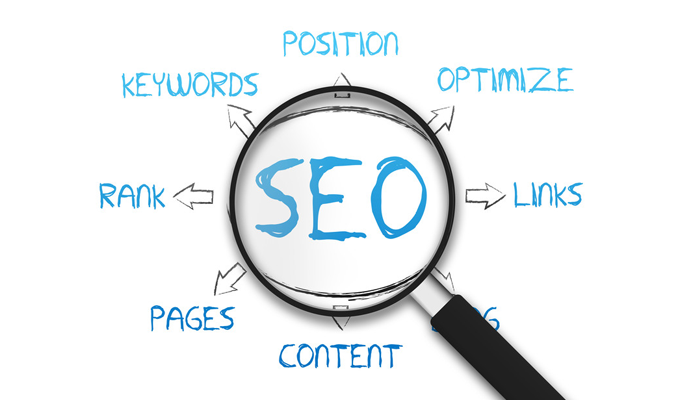Before discussing On Page SEO, Let’s we know what is SEO.
What is SEO?
SEO stands for Search Engine Optimization. It is the procedure of optimizing rank of a website or its web pages on Search Engine Result Pages (SERPs) by applying some SEO factor techniques and using some SEO tools free or paid.
Types of SEO…
There are two types of SEO
1) On Page SEO
2) Off page SEO
But in this blog, we know only On Page SEO.
What is On-Page SEO?
On-page SEO is the process of raising the rank of web pages in order to rank better and gain more visitor in search engines. On-page SEO refers both the HTML source codes and contents of web pages that can be improved.
On Page SEO directs to factors that have a direct effect on webpage or website. Those factors are managed by coding on our webpage.
On Page SEO includes the following factors-
1) Meta Title:
It is an HTML code that is shown on Search Engine Result Pages (SERPs) as a clickable, blue headline of a web page for the given result. Google recommended us that Meta Title is between 60 – 70 characters which include primary and Secondary keyword.
Code Sample:
<head>
<title>Title of Page</title>
</head>
2) Meta Description:
Meta Description is an HTML attribute that is displayed on Search Engine Result Pages (SERPs) below the URL of that page. It should be between 150 – 160 characters which include primary and Secondary keyword.
Code Sample:
<head>
<meta name=”description” content=”Contents of your page “>
</head>
3) Alt Tag:
The alt tag is also called an alternative text, alt attribute, alt description are used within the HTML code of an image to describe the appearance as the name of the primary keyword.
Code Sample:
<img src=”download.jpg” alt=”On Page SEO”>
4) URL Structure:
It makes sure that URL should be hierarchy form. URL should not contain _, 0-9 etc.
Example:
http://movies.com/bollywood-movies/robot2.0
It is SEO friendly.
But
http://movies.com/bollywood_movies/ro77523245
It is not SEO friendly.
5) Header Tag:
Header tags are an important factor for on-page SEO because those are used to express to the search engines that what your website is about. Search engines identify the copy in our header tag starts with h1 is more important than other parts.
The importance of header tag is down through to the h2, h3 and so on. Those tags help to support the overall theme or purpose of our web page.
Code Sample:
<h1>Header Tag</h1>
<h2>Header Tag</h2>
<h3>Header Tag</h3>
<h4>Header Tag</h4>
<h5>Header Tag</h5>
<h6>Header Tag</h6>
6) Keyword Density:
Keyword density is calculated as how much a keyword or keyword phrase displays in a web page compared to the total number of words in the page.
If you use a keyword or keyword phrase 10 times and your total word in a web page is 500, then keyword density is = {(10/500)*100} % =2%
The keyword density should be 2 – 5%. If you use a keyword or keyword phrase too many times, then you are penalized for “Spamming” or “Keyword Stuffing”.
7) Robots.txt:
Robots.txt is a text file that is used to tell the search engine that which page we want to crawl and which page want to not crawl.
Check Robots.txt-
https://www.mywebsite.com/robots.txt
Code Sample:
User-agent: *
Disallow:/wp-admin/
Disallow:/wp-includes/
8) Sitemap:
The sitemap is an XML or HTML file that contains URL of all web pages of a website. It is to be uploaded for tells the Search Engine to crawl that web pages.
Check Sitemap.xml-
https://wwwmywebsite.com/sitemap_index.xml
URL Images Last Mod.
https://www.mywebsite.com/ 0
https://www.mywebsite.com/drupal/ 0 2016-05-26 02:05 +00:00
https://www.mywebsite.com/joomla/ 0 2016-05-26 02:12 +00:00
https://www.mywebsite.com/placement/ 0 2016-05-26 02:13 +00:00
https://www.mywebsite.com/magento/ 2 2016-05-26 02:16 +00:00
9) Canonicals:
A Canonical Tag is used to tell the Search Engine that which version of URL we want to display on Search Results.
Let I have a website www.mywebsite.com
If someone searches on of following-
- mywebsite.com
- http://mywebsite.com
- https://mywebsite.com
- http://www.mywebsite.com
- https://mywebsite.com
On all of the above search, only one URL should open. If your website opens all of separate URL, even though all open your home page, Search Engine may penalize you for Copyright.
Code Sample:
<link rel=”canonical” href=”https://www.mywebsite.com”>
10) Internal or External Link:
An internal or external link is a type of hyperlink on a page to another page, it may be the same or another website. If the destination is within the same website then the link is internal link otherwise external link.
11) Do follow and No follow Link:
Do follow links will pass Page Rank. It is extremely recommended by Search Engines.
Code Sample:
<a href=”https://www.mywebsite.com”>Text of link</a>
No follow links will not pass Page Rank. It isn’t recommended by Search Engines. But to get balanced you have to give No follow links.
Code Sample:
<a href=”https://www.mywebsite.com” rel=”nofollow”> Text of link</a>
